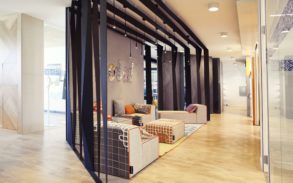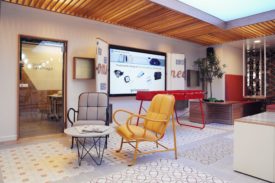
MANHATTAN — Despite all the excitement over flexible workplace models like virtual offices and remote workforce. Only one-third of the workforce in the U.S is working remotely, explained Dan Schawbel, author of “Back to Human: How Great Leaders Create Connection in the Age of Isolation.”
Schawbel said this figure is likely to drastically increase in the coming years based on the findings of the state of Remote Work 2019 Buffer’s annual report in which 99 percent of the respondents said they would like to work remotely at least some of the time for the rest of their careers.
But the truth is that our society is facing what experts already call a hyper-communication dark side effect of loneliness and low engagement.
Even Pope Francis has expressed concerns about technology being a double-edged sword, warning youth about its challenges and benefits, the tendency of “self-isolation” and the danger of becoming “social hermits” who end up “alienating themselves completely from society.”
As a natural counterreaction, we are seeing a boom in search of human connection.
“Co-living, co-eating, co-working, co-driving, co-op gameplay seems to be the answer,” said architect Ilaria D’Alessandro, referring to the trendy prefix that has architecturally translated into the blooming of co-working or collaborative workplace. However, she is not a fan of this solution.
To address this important issue, The Tablet met with the Italian architect and designer at A/D/O, one of the creative spaces in Greenpoint. A/D/O is found- ed by Mini and focuses on providing collaborative and creative workspace for designers “aiming to foster a broader conversation across and beyond disciplines.”
D’Alessandro has extensive experience dealing with the modern requirements of work environments from architectural and ergonomic points of view.
Tell us about your background and expertise in designing the workplace.
Part of the enterprise, to belong to its culture, and the architecture has a prominent role in creating a special frame to develop this sense of belonging.
The key point for the companies is to translate its branding and corporative culture into the architectural space.
A coworking space is a spot designed for everybody, not only for you. That’s the difference! Coworking spaces now work perfectly if you are a freelancer because you may recognize your- self in a group of nomad people, but it is not a practical solution for a company.
Based on that fact, the coworking brand par excellence WeWork has created “Powered by WE,” an internal service devoted to specific and custom projects for the companies that can’t be developed in the WeWork co-working space. It is basically a new design studio.

How do you see the impact of the WeWork model?
“Recently the WeWork company, founded in 2009, created “The We Company,” expanding this coworking concept into other areas to “build a world where no one feels alone.”
This is a unique global culture approach to that phenomenon. They are offering not only working space but habitational communities, professional net-work, friend’s community, legal support, and financial and lending services for their members, among a portfolio of the We brand companies.
But these are actually just short-term solutions to a deeper problem: we are developing into a work-centric society in which our social life is disappearing or becoming increasingly an extension of your professional life.
I think the right questions for those who see a solution in founding their community around the workplace to ask would be: Do you really think a company must provide not only a workplace but also a social life?
This kind of initiative is a remarkable manifestation of the loneliness of our society, extremely technologically connected but humanly isolated.
We need a balance between work life and private life. And the private life is not in your office. The private life is spending time with people you’ve chosen, not the ones available in a very artificial network. It’s important to have this in mind, and I’m afraid that people don’t get it.
Is there a difference in the design of the workplace in Europe and the U.S.?
I feel there are different mentalities. Therefore the design of the workplace and workplace business models need to adapt. That could be the reason WeWork has a huge success in the States while in Europe it is slowly growing – they opened their first spots in Milan, Italy, only three months ago.
In the States, and above all in a cosmopolitan city like New York City, people suffer because of the loneliness, because they don’t belong to the city, coming from all over the world. WeWork has understood this situation and has created a model of community for people that prefer spending their Friday afternoon in the office instead of hanging out with friends and family.

Are you scared of this kind of model?
The growth of the company is impressive. They are already in 114 cities all over the world. I think people still don’t realize the massive presence of WeWork, its deep meaning, and transformative impact an active part of the cultural change in working place.
I think its role is comparable to Facebook’s impact on the development of social networks or Amazon in the transformation of the global market.
Without competitors, they are free to set their own rules, free to grow up changing irreversibly our society.
I am afraid of the work-centric culture progressively developing. In which, as never before, it is not the person but the workplace that is the center of human life.
I am honestly scared about what this cultural change means for the future of our way of life.
